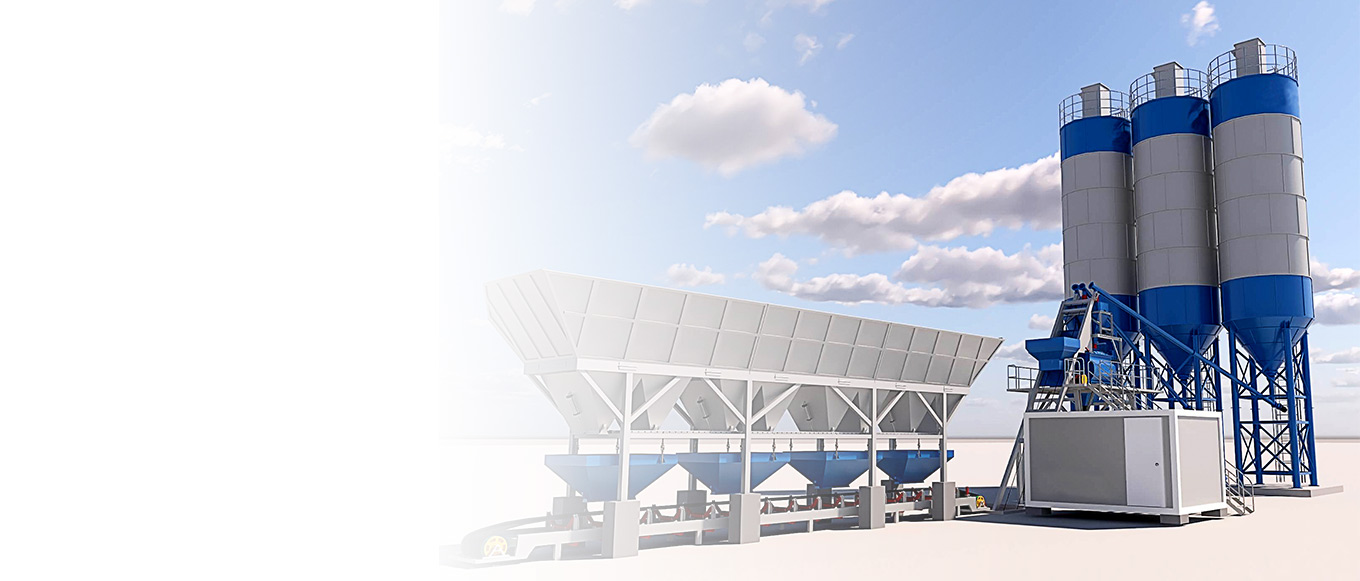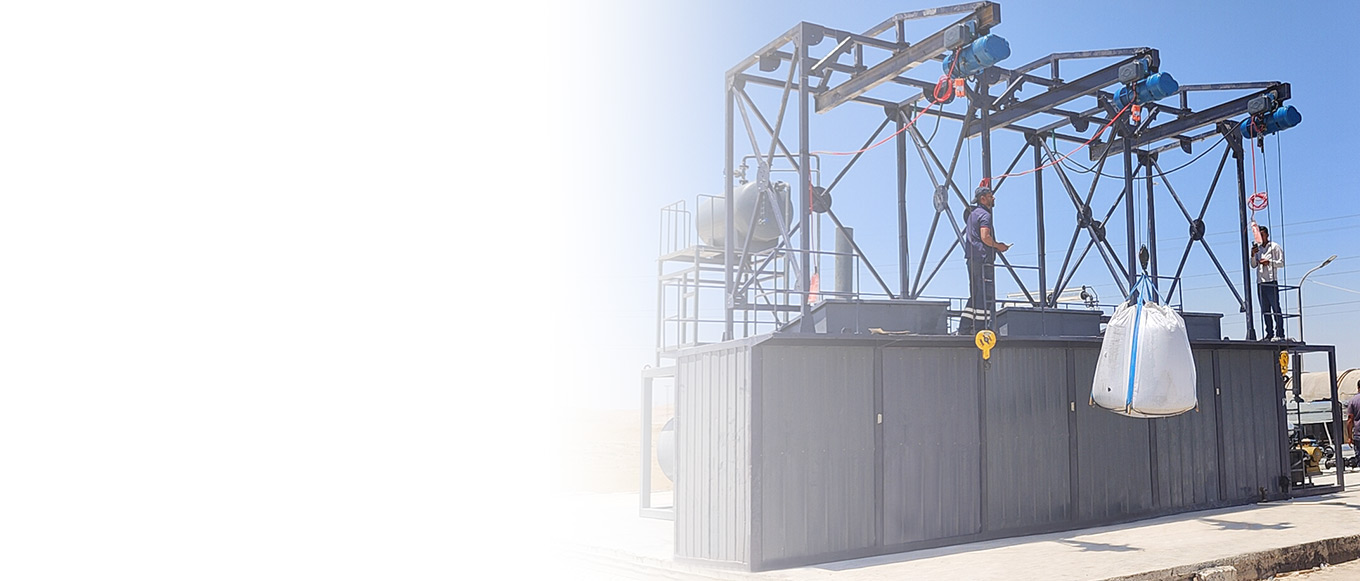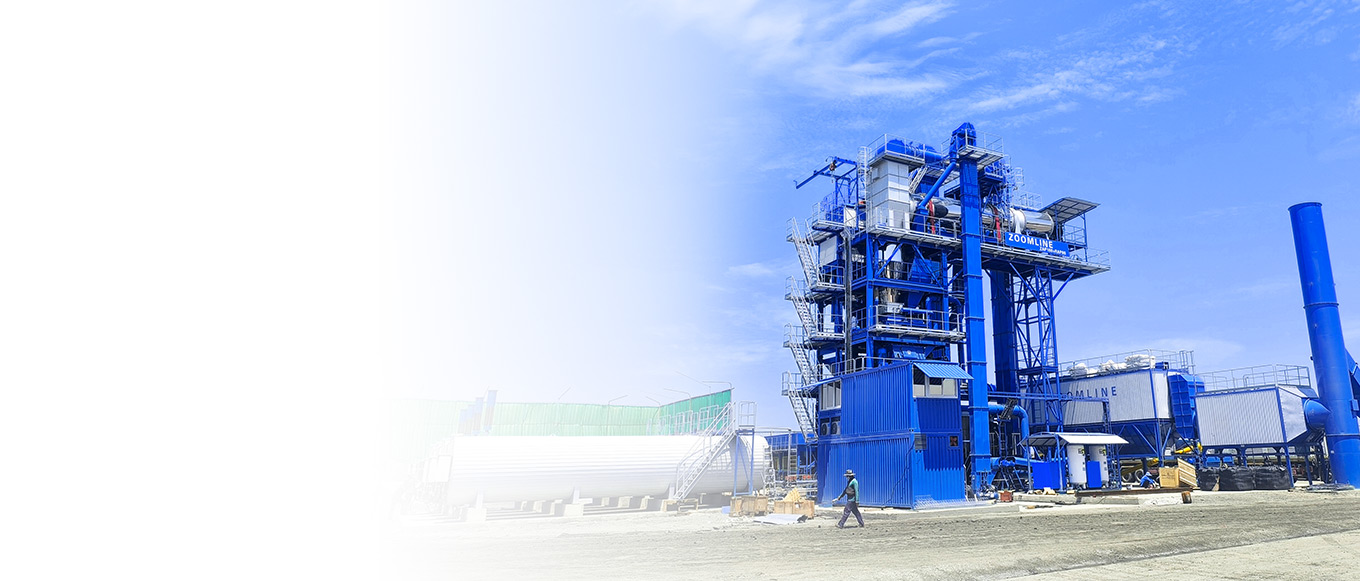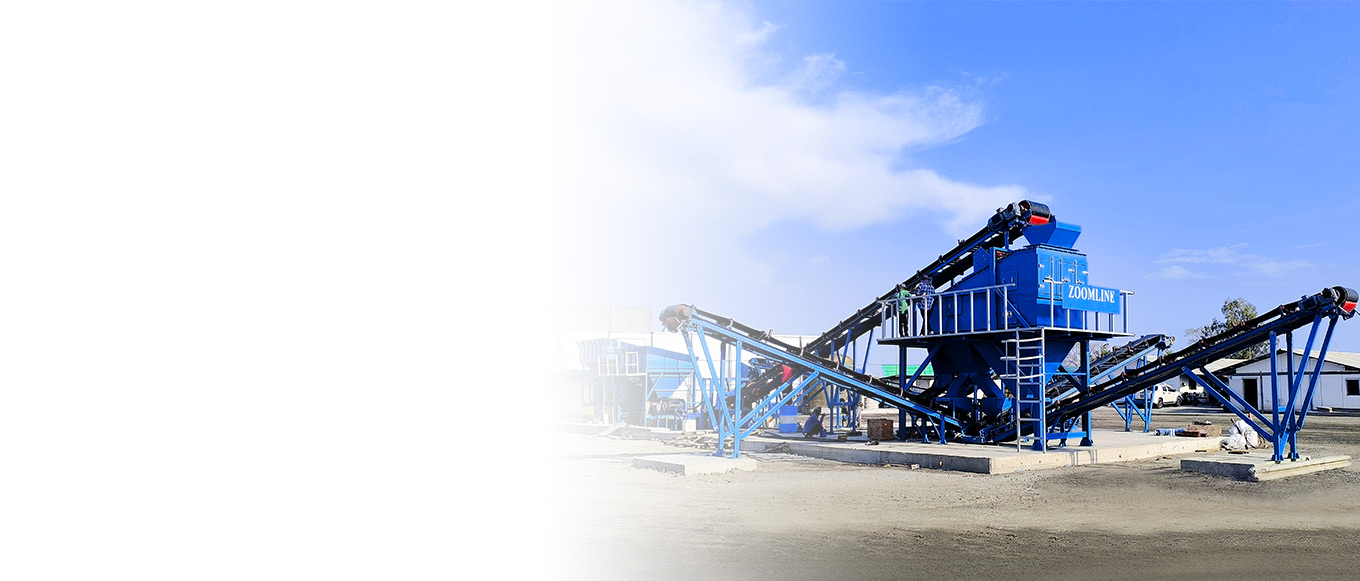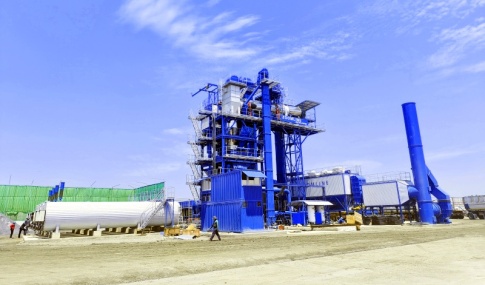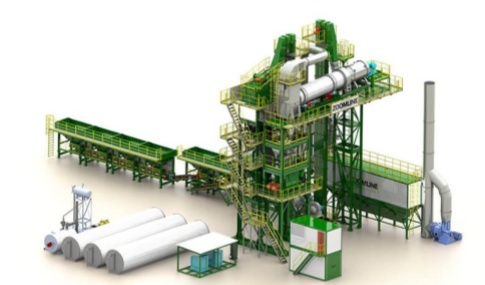In modern infrastructure construction, the quality of projects such as roads, parking lots, and airport runways is closely related to the materials selected. Hot mix asphalt (HMA), as a widely used paving material, has become the preferred choice for many projects due to its excellent performance. So, what exactly is hot mix asphalt? What is its composition, production process, and advantages?
Introduction of Hot Mix Asphalt
Hot mix asphalt is a paving material composed of approximately 95% aggregate (including crushed stone, sand, gravel, etc.) and about 5% asphalt binder (a byproduct of crude oil refining). At the hot-mix asphalt plant, the aggregates are heated and thoroughly mixed with the asphalt binder to form a uniform mixture. This mixture is then transported to the construction site, spread using a paver, and compacted by a roller. Once cooled, the surface is ready for traffic. This material plays an irreplaceable role in various infrastructure projects due to its unique composition and production process.
Key Components of Hot Mix Asphalt
To gain a deeper understanding of hot-mix asphalt, it is essential to first grasp its core components. This not only helps us comprehend its performance advantages but also provides a scientific basis for material selection in engineering projects.
Aggregates
Aggregates serve as the “scaffolding” of hot-mix asphalt, composed of a mixture of sand, gravel, crushed stone, and other mineral materials. Its quality and characteristics directly impact the overall performance of hot-mixed asphalt: the particle size of the aggregate determines the compaction effect and load-bearing capacity of the asphalt mixture. Smaller particles can better bond during compaction, enhancing overall stability; while proper grading (the combination of particles of different sizes) ensures uniform mixture density, enhancing load-bearing capacity, enabling it to withstand repeated crushing by heavy vehicles.
Asphalt Binder
Asphalt binder serves as the “adhesive” in hot-mixed asphalt, forming a thin film that coats the aggregate surface. Derived from crude oil, it possesses excellent viscosity and extensibility. During compaction, the asphalt binder firmly binds dispersed aggregates into a continuous, cohesive structure, preventing material fragmentation under pressure or external forces. Additionally, it blocks water penetration, reducing erosion of the asphalt pavement by rainwater and snow/ice, and slowing down aging and damage.
Additives
Additives are the “performance enhancers” of hot-mixed asphalt, added during mixing to improve the material’s durability and adaptability. Common additives include: polymers to improve asphalt rheological properties and viscosity, enhancing resistance to deformation; fibers to increase the tensile strength of the mixture and reduce cracking; anti-stripping agents to reduce aggregate moisture absorption and prevent water damage; and waxes and softeners to regulate asphalt hardness and enhance low-temperature elasticity. These additives enable hot-mix asphalt to adapt to diverse engineering requirements under varying climatic and traffic conditions.
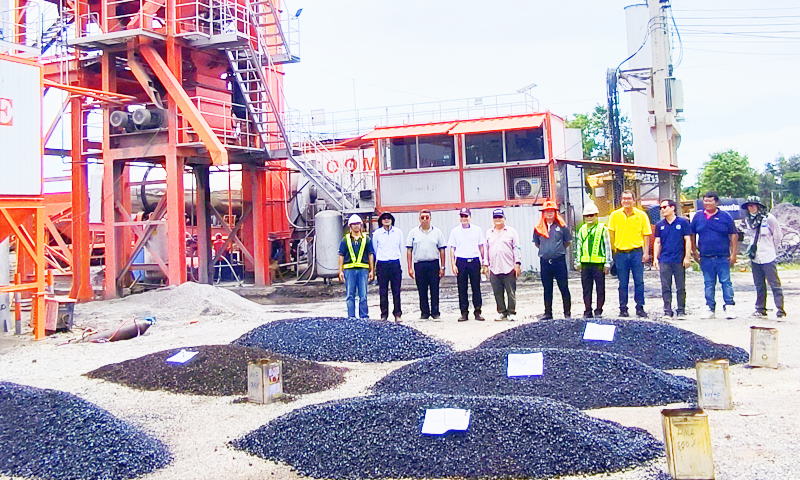
How is Hot Mix Asphalt Produced
The superior performance of hot-mix asphalt relies on a rigorous production process, with each step critical to the final product quality.
Aggregate Preparation
Aggregates are typically sourced from local quarries and mixed in specific proportions according to project requirements, combining crushed stone, sand, and gravel. First, the aggregates must be dried to remove moisture, preventing it from affecting the subsequent mixing process; then, the aggregates are heated to high temperatures to ensure they can fully absorb the asphalt binder during mixing, forming a uniform coating. The processed aggregates are conveyed via a conveyor belt to the asphalt mixing plant for the next mixing stage.
Binder Preparation
The preparation of asphalt binder directly affects the bonding strength of hot-mixed asphalt. During production, the asphalt binder is heated, dried, and precisely measured before being mixed with additives (such as waste oil, recycled solid materials, etc.). This process adjusts the density and flowability of the binder, ensuring it distributes uniformly when mixed with aggregates, laying the foundation for the final product’s compaction and stability. If the binder is not prepared properly, the asphalt may fail to adequately bond with the aggregate, leading to issues such as loose or cracked pavement.
Mixing Process
Mixing is the core process in hot-mix asphalt production and must be conducted under strictly controlled temperature conditions. Heated aggregate, prepared binder, and additives are loaded into the mixing equipment and thoroughly blended through mechanical action to ensure uniform integration of all components. Temperature must be strictly controlled within specified limits to ensure the workability, compaction strength, and durability of the mixture. Only uniformly mixed hot-mixed asphalt can form a structurally stable and high-performance pavement after paving.
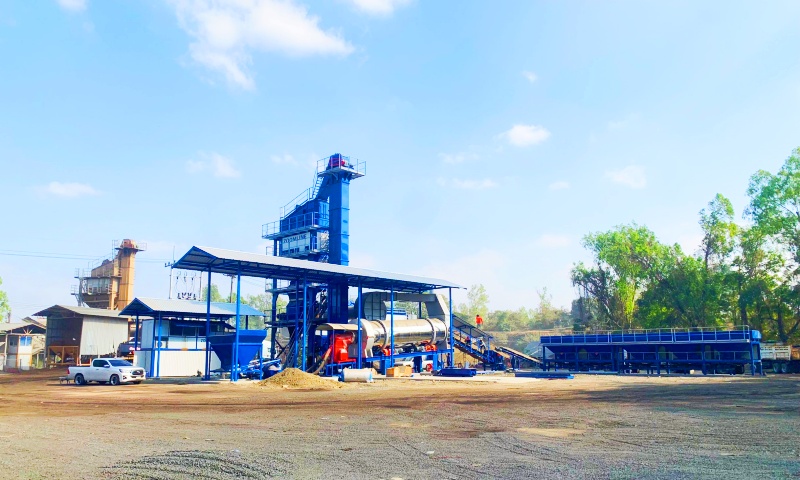
Types of Hot Mix Asphalt
Depending on engineering requirements, hot-mixed asphalt can be divided into various types, each with unique properties and application scenarios.
Porous Asphalt
The distinctive feature of porous asphalt is its 15-16% void ratio (compared to 2-3% for ordinary asphalt), allowing rainwater to permeate through the surface into the underlying aggregate layer and ultimately filter into the soil. This design effectively addresses surface water accumulation issues, reduces cracking damage caused by freezing, and filters pollutants from water, contributing to environmental protection. Porous asphalt is suitable for parking lots, driveways, and roads requiring stormwater management in rainy regions, reducing the construction costs of traditional drainage facilities.
Stone Matrix Asphalt (SMA)
Stone matrix asphalt uses a high proportion of coarse aggregate to form a robust “stone-to-stone contact” structure, offering exceptional resistance to rutting and durability. It can withstand repeated heavy traffic loads while providing excellent noise reduction, making it ideal for high-traffic areas such as highways and airport runways. Although the initial cost is higher, the reduced maintenance and longer lifespan result in lower overall costs over time, making it an ideal choice for high-traffic areas.
Dense-Graded Mix
Dense-graded asphalt is one of the most widely used types, characterized by its waterproof properties and stable performance, suitable for a variety of applications from driveways to highways. It is divided into coarse-graded and fine-graded types: coarse-graded asphalt contains a higher proportion of large-sized aggregates, offering high strength and suitability for thick-layer paving under heavy loads; fine-graded asphalt has smaller particles, a smooth and flat surface, and is suitable for residential driveways, parking lots, and road repairs. Dense-graded asphalt balances durability with construction convenience, making it a commonly used material in road renovation projects.
Advantages of Hot-Mix Asphalt
Hot-mix asphalt is widely used due to its numerous outstanding advantages, which provide long-term value for projects.
High Durability
Under proper construction and maintenance conditions, the design service life of hot-mix asphalt pavements can reach up to 25 years. By scientifically adjusting the proportions of aggregates, asphalt, mineral powder, and other raw materials, pavement performance can be precisely optimized for different usage scenarios, endowing it with exceptional resistance to rutting, cracking, and water damage. Whether subjected to repeated heavy traffic loads, extreme temperature fluctuations, or prolonged exposure to wind and rain erosion, hot-mix asphalt pavements maintain excellent structural stability, effectively reducing the frequency of post-construction maintenance and minimizing both maintenance costs and the dual losses caused by traffic disruptions.
Outstanding Skid Resistance
Hot-mix asphalt pavements demonstrate exceptional skid resistance. Through special gradation design and aggregate interlocking structure, they provide strong traction support for vehicle tires in rainy or wet road conditions, significantly reducing braking distances and minimizing the risk of skidding and loss of control. This characteristic is particularly critical in applications such as highways, mountain roads, and regions with heavy rainfall, not only ensuring daily driving safety but also establishing a robust safety barrier for the swift passage of emergency vehicles such as fire trucks and ambulances.
High Road Surface Smoothness
After hot-mix asphalt paving, the road surface smoothness can achieve a high-precision standard of ±3mm. Through multiple compaction processes, a dense structural layer is formed, with a surface as smooth and flat as a mirror. This superior road quality not only effectively absorbs shocks caused by road bumps and unevenness but, combined with its unique elastic modulus, controls vehicle vibration frequencies within the human comfort range, providing drivers with a smooth and comfortable driving experience. From an economic perspective, a smooth road surface significantly reduces rolling resistance between vehicle tires and the ground. According to authoritative test data, it can reduce tire wear by approximately 15%, while also reducing engine load, improving fuel efficiency by 8%-12%, and significantly lowering daily maintenance costs and long-term usage costs, truly achieving green and low-carbon travel.
Significant Cost-effectiveness
Compared to traditional paving materials like concrete, hot-mix asphalt demonstrates significant cost advantages in the early stages of a project. When calculated by square meter of paving cost, the material and construction costs of hot-mix asphalt are approximately 15%-20% lower than concrete, making it highly attractive for budget-constrained municipal road and parking lot renovation projects. From a long-term maintenance perspective, hot-mix asphalt pavements, with their high flexibility and fatigue resistance, effectively withstand common defects such as rutting and cracking. Maintenance cycles are extended by 3-5 years compared to concrete pavements, with annual maintenance costs reduced by over 40%. Especially in cold and rainy regions, the excellent temperature adaptability of hot-mix asphalt significantly reduces the need for structural repairs caused by freeze-thaw cycles and water damage. Based on a comprehensive lifecycle cost analysis, projects using hot-mix asphalt save an average of 25%-30% in total investment over 10-15 years compared to concrete solutions, making it the preferred paving material for projects seeking high cost-effectiveness.
Applications of Hot Mix Asphalt
With its diverse performance advantages, hot-mix asphalt plays a vital role in various infrastructure construction projects.
Highway Construction
In the field of highway construction, hot-mix asphalt plays an irreplaceable key role. It not only serves as a surface layer, providing vehicles with a smooth and comfortable driving surface, but also functions as a base layer, effectively enhancing the overall strength of the road structure. With up to 95% aggregate content, hot-mix asphalt combines excellent flexibility with robust load-bearing capacity, enabling it to withstand prolonged heavy-duty vehicle traffic while significantly reducing the risk of cracking caused by extreme temperature fluctuations.
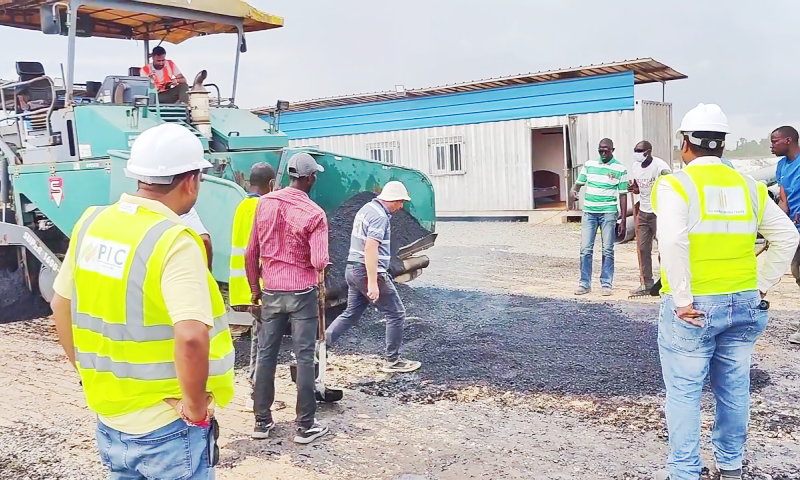
Airport Runways
Airport runways face the rigorous challenges of powerful impact forces and loads during aircraft takeoff and landing. Hot-mix asphalt stands out due to its superior high strength and stability, making it an ideal material for constructing runways. It not only securely supports the weight of large passenger aircraft weighing tens of tons but also maintains structural integrity under frequent takeoff and landing impacts, providing a robust barrier for flight safety.
Parking Lots
Parking lots, as high-traffic areas for vehicle parking, starting, and turning, impose extremely stringent performance requirements on pavement materials. Hot-mixed asphalt, with its outstanding durability and wear resistance, can withstand the daily impact of vehicle loads and effectively resist damage caused by tire friction and碾压. Additionally, its low-maintenance characteristics significantly reduce post-construction maintenance costs and frequency. Its signature smooth black surface not only provides a clean and aesthetically pleasing visual effect but also highlights its practicality and aesthetic appeal.
Race Tracks
As arenas for speed and excitement, race tracks demand nearly uncompromising standards for pavement performance. Hot-mix asphalt, with its superior construction techniques, can create a continuous, smooth, and uniformly dense surface structure, providing race cars with stable traction conditions and a low-drag driving environment. Its unique viscoelastic material properties act like a “shock-absorbing armor” for the track, effectively absorbing vibration energy under the intense impact of high-speed vehicles while resisting the risk of pavement cracking, ensuring the safety and smooth operation of races.
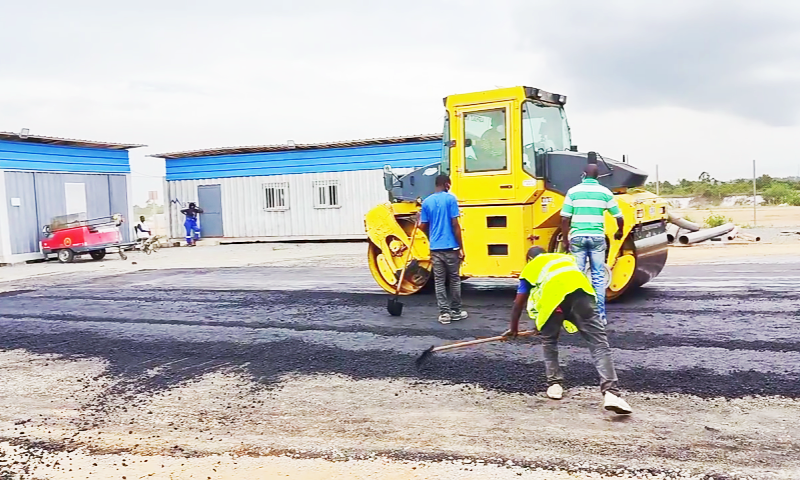
Other Common Asphalt Mixes
In addition to hot-mix asphalt, common asphalt types include warm-mix asphalt and cold-mix asphalt, each with distinct performance characteristics and application focuses.
Warm Mix Asphalt (WMA)
WMA serves as an eco-friendly upgrade to HMA. By adding special warm-mix additives (such as organic wax, foamed asphalt, or surfactant-based additives), the production temperature of the asphalt mixture is reduced to approximately 120°C (about 248°F). Compared to the conventional operating temperature of 150-180°C for HMA, This technological innovation yields significant environmental benefits: industry data indicates that each ton of WMA production reduces fuel consumption by approximately 30%, lowers carbon dioxide emissions by 25–30%, and effectively reduces harmful gas emissions such as asphalt fumes and benzo[a]pyrene, significantly improving air quality at construction sites.
From a construction safety perspective, the warm-mix process reduces the time workers are exposed to high temperatures. Combined with improved equipment cooling designs, this can lower the operating area temperature by 10–15°C, significantly reducing occupational health risks such as heatstroke and burns. Its unique rheological properties confer superior environmental adaptability: even in low-temperature environments above 5°C, warm-mix asphalt maintains excellent paving and compaction performance, enabling construction to extend into early winter. Compared to traditional hot-mix asphalt, the effective construction time window is expanded by nearly 40%. This technology is particularly suitable for environmentally sensitive locations such as urban centers, schools, and hospitals, as well as special engineering scenarios such as winter emergency road repairs and road construction in high-altitude, low-temperature regions.
Cold Mix Asphalt
As an alternative to hot-mixed asphalt, cold-mixed asphalt uses ambient or low-temperature mixing processes, eliminating the need to heat aggregates and asphalt, thereby significantly reducing energy consumption and carbon emissions. During construction, it exhibits good flowability and plasticity, enabling rapid paving even in cold weather or remote areas without heating equipment, greatly enhancing construction flexibility. However, cold-mixed asphalt primarily relies on solvent evaporation and physical curing for formation. Compared to the dense structure formed by high-temperature fusion in hot-mixed asphalt, its internal bonding strength is weaker, and its resistance to rutting and water damage is significantly insufficient. Actual test data show that the service life of cold-mixed asphalt pavements is only one-third to one-half that of hot-mixed asphalt, and they are prone to issues such as loosening and potholes under heavy traffic loads.
This material is particularly suitable for emergency response scenarios, such as rapid filling of potholes on winter roads or temporary repairs on low-traffic roads in rural or suburban areas. With technological advancements, new cold-mixed asphalt formulations incorporating specialty polymers and emulsified asphalt modifiers have significantly improved early strength and weather resistance. Some high-performance cold-mixed asphalt products, as tested in laboratories, achieve compressive strength after 7 days that is twice that of traditional cold-mixed materials. In actual applications in rural or suburban areas, their service life is extended to 3–5 years, offering a new cost-effective option for road maintenance.
Choosing the Right Mix
Selecting the appropriate asphalt type requires comprehensive consideration of the specific conditions of the project to ensure that material performance aligns with project requirements.
- Climate factors: In rainy regions, frequent rainfall can cause water accumulation on road surfaces, forming a water film that leads to vehicle skidding and safety incidents. Porous asphalt, with its unique pore structure, can drain water quickly, effectively enhancing driving safety in rainy conditions. In cold regions, low winter temperatures limit traditional hot-mix asphalt construction. Warm-mix asphalt, by adding special additives to reduce the production temperature of asphalt mixtures, not only extends the construction period but also reduces energy consumption and harmful gas emissions. In high-temperature regions, prolonged high temperatures can cause asphalt pavements to soften, leading to rutting and potholes. Therefore, hot-mix asphalt containing high-modulus asphalt and anti-rutting agents should be selected to enhance the pavement’s resistance to deformation.
- Traffic volume: High-traffic highways and airport runways bear heavy loads from heavy vehicles and aircraft takeoffs and landings daily. Under repeated vehicle loads, the pavement must have excellent fatigue resistance and rutting resistance. SMA (asphalt mastic stone mixture) forms a skeletal structure with discontinuous graded coarse aggregates, filled with asphalt mastic, featuring low void content and strong high-temperature stability; Dense-graded hot-mix asphalt achieves high mix density through strict control of aggregate grading, effectively resisting damage from heavy traffic loads. For low-traffic roads with relatively small traffic loads, ordinary hot-mix asphalt is sufficient to meet usage requirements; improved cold-mix asphalt offers simplified construction without heating, suitable for sections with low traffic volume and urgent repair needs.
- Project scope: For temporary repair projects, such as localized pothole repairs on roads, cold-mixed asphalt can be applied at ambient temperatures without large heating equipment, enabling rapid traffic reopening and minimizing traffic disruption. Permanent projects demand extremely high standards for pavement quality and durability. Hot-mix asphalt is mixed at high temperatures, ensuring thorough coating of aggregates with asphalt and strong bonding, resulting in a robust and durable pavement structure. Although the initial cost is higher, it offers greater advantages in terms of long-term usage and maintenance costs; Warm-mix asphalt combines the high performance of hot-mix asphalt with environmental benefits, reducing energy consumption and emissions of pollutants such as carbon dioxide and dust during production. It aligns with current green construction and sustainable development concepts, making it an ideal choice for environmentally conscious projects.
The right choice can extend pavement lifespan, reduce maintenance costs, and ensure the safety and stability of infrastructure.
Challenges and Limitations of Working with Hot Mix Asphalt
Despite its significant advantages, hot-mix asphalt still faces some challenges during use that require planning and preparation.
Temperature Constraints
Hot-mix asphalt construction has nearly stringent temperature requirements, necessitating precise control within the 275-300°F (approximately 135-149°C) range. If the temperature exceeds the upper limit, the asphalt binder accelerates aging, leading to reduced viscosity of the mixture, resulting in unevenness such as waves or rutting after paving. If the temperature falls below the lower limit, the viscosity of the asphalt increases sharply, making it difficult for the aggregate to be fully coated. This not only significantly reduces compaction efficiency but also causes voids within the pavement, reducing structural strength and resistance to water damage. In actual construction, in addition to equipping high-precision infrared thermometers, temperature sensors, and other real-time monitoring devices, insulation devices must also be installed on transport vehicles to ensure that temperature loss of asphalt from the mixing plant to the construction site is minimized.
Seasonal Restrictions
In cold climate regions, the construction cycle of hot-mixed asphalt is severely constrained by seasonal changes. When the ambient temperature drops below 10°C, the cooling rate of the asphalt mixture accelerates exponentially, reducing the effective working time from unloading to completion of compaction to one-third or even less of that in normal temperature conditions. If paving is forced after cooling, the asphalt and aggregate cannot form a stable interlocking structure, resulting in insufficient compaction of the pavement surface. This can lead to issues such as loosening and potholes after traffic is permitted. To overcome seasonal limitations, construction companies typically adopt three strategies: first, precisely planning construction windows to concentrate operations during periods of higher temperatures; second, introducing warm-mix asphalt technology by adding special additives to reduce temperature requirements; and third, using new equipment such as heated screeds and hot-air circulation pavers to reheat the asphalt during paving to ensure compaction meets standards.
Conclusion
Hot mix asphalt, as a mature paving material, plays a significant role in infrastructure construction due to its excellent durability, skid resistance, smoothness, and cost-effectiveness. Understanding all aspects of hot-mix asphalt—from its composition and production process to type selection and practical application—can help engineers make more informed decisions and create high-quality roads, parking lots, and airport runways. Despite temperature and seasonal challenges, hot-mix asphalt remains an ideal choice for many projects through proper planning and technical control.


